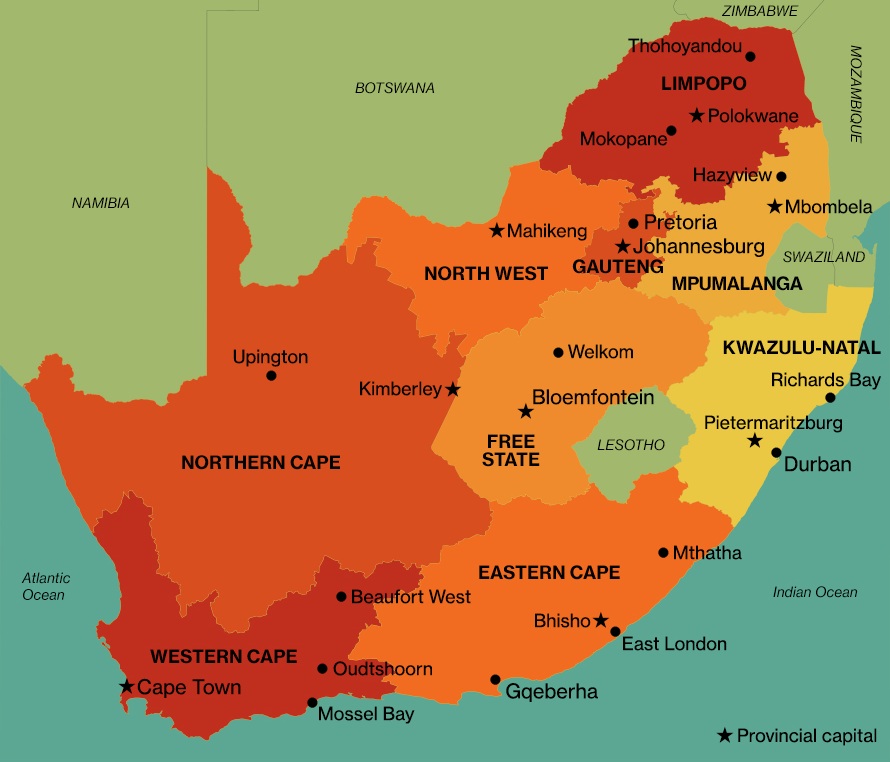South Africa Confidence Rises But Capacity Lags
Business confidence at 121.1 lifts sentiment, but output hinges on power and rail capacity; JSE:AGL and JSE:SHP gain on cyclical tailwinds while local yields near 11% signal unresolved Eskom and Transnet risk.

South Africa’s September business confidence reading of 121.1 extends a tentative rebound in sentiment while exposing the economy’s execution gap. The composite gain reflects firmer precious-metal prices, a sustained recovery in tourism, and marginal operational improvements at utilities and logistics. The macro signal is a repricing of near-term activity, not a structural turn. With 2025 real GDP growth projected near 1.5% against an estimated potential of roughly 2.0–2.5%, sentiment above 120 will convert to output only if power stability and freight capacity improve enough to compress unit costs and release working capital trapped in delays.
The transmission from sentiment to growth runs through inventory normalization, cash-flow reliability, and export throughput. Firms that endured erratic power supply and port congestion have begun to rebuild inventories and restore order cycles as outage intensity eases from 2023 peaks and vessel queues thin. The constraint remains binding: generation availability sits below prudent thresholds and rail tonnages trail pre-2019 levels. Each percentage point of unscheduled power losses still shaves industrial output, while logistics frictions impose a multi-point cost wedge on exporters in bulk commodities, autos, and food processing. Higher commodity prices support receipts and the rand’s terms of trade, but the domestic multiplier stays capped until factories can run longer, steadier shifts and exporters can clear cargo without elevated demurrage and diesel substitution.
Monetary and fiscal settings frame the risk premium. Headline inflation is set to average around 5% in 2025, allowing the policy rate to hold at 8.25% with a modestly positive real stance. That stabilizes funding costs and limits disorderly currency pass-through, creating scope for private capex if operational constraints recede. On the sovereign side, a consolidated deficit near 4.5% of GDP and public debt in the mid-70s percent keep local-currency bond yields anchored near 11%. Absent visible improvements at Eskom and Transnet, the term premium will remain sticky even if global risk appetite improves, muting duration gains and raising hurdle rates for project finance.
Sectorally, the composition of the confidence upturn favors listed franchises with direct leverage to throughput normalization. Industrial services and logistics platforms benefit from improving procurement cycles and better asset utilization; Bidvest (JSE:BVT) screens as a clean operational proxy. Consumer leaders with resilient pricing power and wide supplier networks, such as Shoprite (JSE:SHP), gain from stabilized store operations and incremental employment. Mining majors including Anglo American (JSE:AGL) and Sibanye Stillwater (JSE:SSW) track precious-metal strength, but equity beta remains tied to rail availability and port turnarounds that set realized export volumes. Earnings translation is mechanical: fewer curtailment hours, lower diesel back-up costs, shorter dwell times, and higher first-pass yield lift margins and free cash flow, which in turn compress credit spreads and lower equity cost of capital.
Policy delivery is the gating variable. The energy roadmap targets meaningful additions from private generation and faster maintenance over the next 18–24 months. Freight concessions on mineral and general-freight corridors aim to lift rail tonnage and restore schedule integrity. These programs only reprice macro risk if tracked against hard KPIs—unplanned outage rates, system minutes lost, corridor tonnage, vessel turnaround, and truck dwell time—with transparent, time-stamped reporting and credible remediation when targets slip. A confidence index at 121.1 signals appetite to invest and hire; without measurable capacity gains it decays into a soft leading indicator rather than a predictor of real activity.
Markets already discriminate between sentiment and throughput. The FTSE/JSE complex has outperformed emerging-market peers on a quarterly basis, yet local sovereign yields hold near 11% and spread compression is incremental. That split is rational: equities price cyclical demand and company-specific execution, while bonds embed slow-moving fiscal and SOE reform risk. The rand responds primarily to terms-of-trade swings and global risk cycles; sustained appreciation requires a tradables expansion that reduces current-account volatility and broadens hard-currency earnings beyond mining.
The forward test is explicit and time-bound. By mid-2026, confirmation of a genuine inflection requires load-shedding days below 50 on a rolling 12-month basis, rail throughput at least 10% above 2024 levels on priority corridors, manufacturing PMI averaging above 50 with new orders tracking output, and non-mining goods exports growing above 5% year on year. On the market side, a 50–100 basis-point decline in the 10-year yield alongside stable bank NIMs would indicate risk-premium compression driven by operational, not merely cyclical, improvement. Until those thresholds print, optimism remains contingent on delivery.





